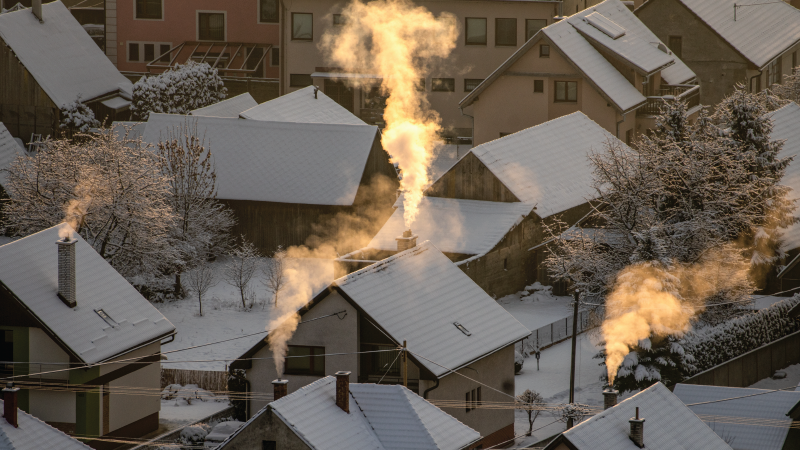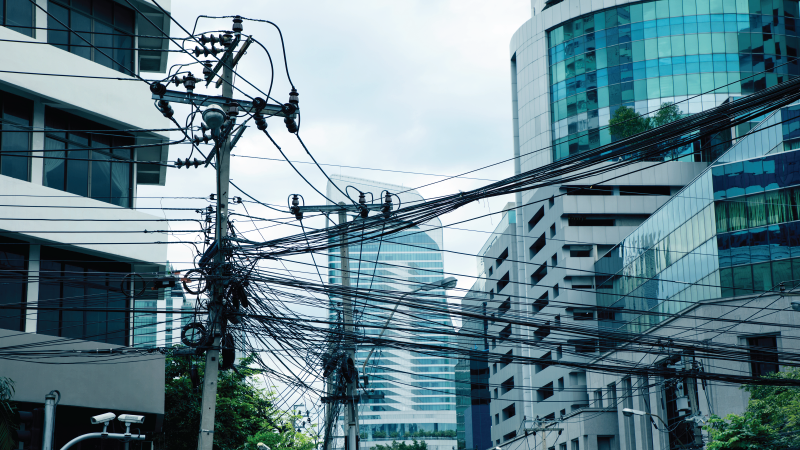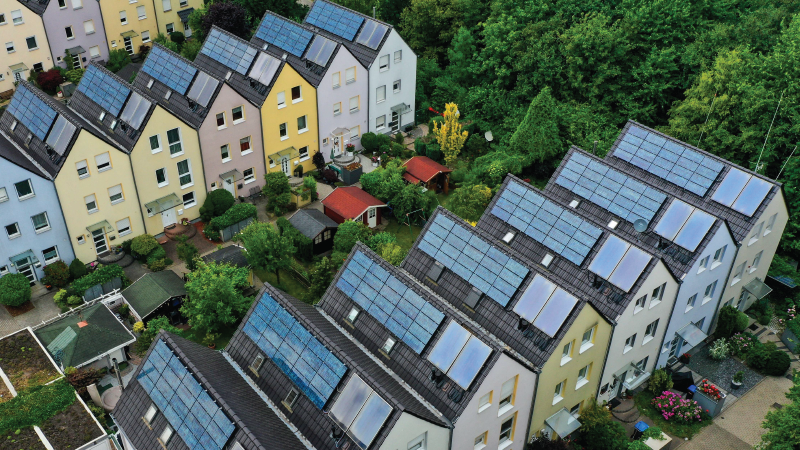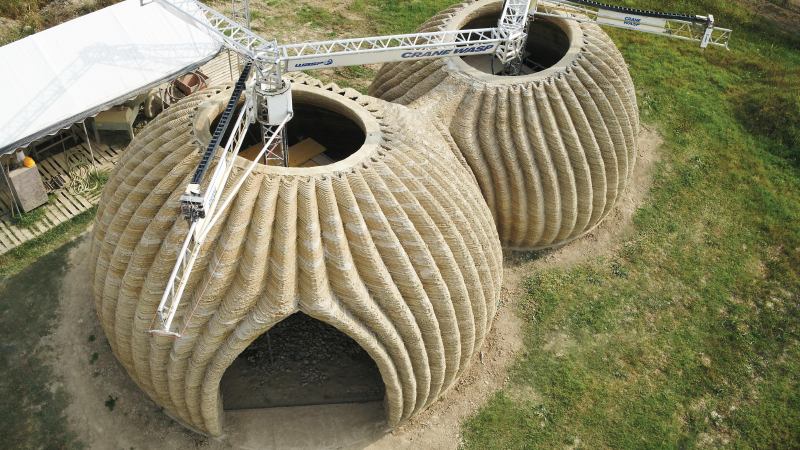How to Lower Buildings-Sector Emissions
The buildings we live in cause emissions. Changing our edifices can set up a more sustainable future.
Are you inside right now? Is the temperature comfortable? Did you fry an egg for breakfast or just grab something out of the fridge? Is the screen you’re reading this on currently plugged in?
The answers to those questions aren’t just a matter of comfort and convenience. They touch the heart of many of the concerns we have today about climate change.
In a world filled with gas-guzzling cars and smoke-stacked power plants, many people view climate change as something that’s happening outside. But the way we live inside also has a big effect. The houses, offices, schools, and other structures used around the world as a central feature of daily life—or what the Intergovernmental Panel on Climate Change (IPCC) calls the “buildings sector”—accounts for at least 6 percent of global greenhouse gas emissions.
This resource explores how the buildings sector causes emissions that lead to climate change, and what we can do to lower them.
How do buildings cause emissions?
Buildings cause emissions for several reasons. When buildings shield us from extreme cold and heat or help fuel us with food by way of cooking appliances and refrigerators, there are climate costs to consider. The IPCC’s 6 percent figure in the chart above only includes direct emissions from buildings. Those costs stem from activities and processes that emit greenhouse gases directly from the building. They include the following:
- Cooking: Around 55 percent of the world’s population relies on gas for cooking. When you light a stove, burning that gas releases carbon dioxide (CO2) and other greenhouse gases. Even when they're not being used, stoves often leak some of those gases into the air.
- Heating: Most commonly, buildings are heated with boilers and furnaces that burn natural gas, releasing plenty of greenhouse gases. In some cases, however, residents heat their houses with even higher-emitting fossil fuels. For example, much of the northeastern United States relies on heating oil, while areas of China still rely on burning coal for home heating.
- Air conditioning and refrigeration: Air conditioners and refrigerators typically operate with a refrigerant fluid made from hydrofluorocarbons (HFCs). Those powerful greenhouse gases often leak from the cooling systems over time.
If it included all emissions associated with buildings, however, the chart would show even worse damage. Accounting for other emissions pathways, buildings contribute to 21 percent of global greenhouse gas emissions.
One area of concern is building construction. The process of building releases greenhouse gases called “embodied emissions,” which occur during construction and the manufacturing of the materials used to make buildings. In particular, cement and steel creation produces many greenhouse gases. Embodied emissions accounted for around 3 percent of global greenhouse gas emissions in 2019.
The outlets that are handy for charging our phones and appliances are also a major culprit. The largest source of building emissions is indirect emissions that come from the electricity used to power heating, air conditioning, lighting, and appliances, along with anything else plugged into the building’s outlets. All the electricity production for those items accounts for 10 percent of global greenhouse gas emissions.
How to lower building emissions
Several concrete strategies exist to decrease buildings-sector emissions. They include the following methods:
- Electrification: Swapping out gas furnaces and stoves for electric heaters and cooking stoves will reduce plenty of direct building emissions. Even if the grid that electricity comes from isn’t completely green, it will still reduce the total emissions from cooking and heating, and building emissions will drop as more renewables and clean energy get installed into the grid in the future.
- Efficient lighting and appliances: Switching to low-energy light-emitting diode (LED) lighting and installing energy-efficient appliances can help reduce buildings’ overall energy demand and indirect emissions. Newer, more efficient air conditioners and refrigerators can also lower the number of HFCs that are emitted into the atmosphere.
- Onsite renewables: Installing solar panels on or nearby buildings can provide renewable-generated electricity. This lowers (and with battery storage, could potentially eliminate) a building’s reliance on electricity from a not fully clean-sourced grid, reducing the buildings’ indirect emissions.
- Efficient design: New buildings can be constructed with more energy-efficient designs. Better insulation and advanced ventilation systems (including heat pumps) can make it easier to heat and cool interior spaces. Such measures lower the total emissions caused by heating and cooling buildings.
- Wood materials: Constructing buildings with wood, rather than cement or steel, could reduce embodied emissions significantly. If the timber comes from sustainably managed forests, new trees will regrow, pulling more CO2 out of the atmosphere, acting as additional carbon storage. Some analysts are concerned, however, that a widespread increase in using wood for construction could harm the world’s forests and potentially increase emissions.
What's holding us back?
Although humans have made some progress, there are many roadblocks to overcome to transform the buildings sector. For one, projects in that space tend to be large in scale, and changes would sometimes require high up-front costs and require new resources and forms of expertise to change current practices. The good news is that, in the long run, the savings and benefits can make up for the costs, and more efficient practices should lower them.
Changing the sector will require policymakers and real estate business leaders to think expansively about all the factors that shape how buildings are constructed and maintained.
In general, experts identify a number of challenges [PDF] to making the transition to greener buildings, including the following three:
- Supply chains for more sustainable materials and appliances are easily disrupted or could face limitations.
- The construction labor force is inexperienced at raising newer, green buildings.
- Some building industry stakeholders are resistant to building code changes and wary of trying new practices.
One overall challenge is that buildings are typically intended to last a long time, so in practice, we’re often stuck with inefficiently designed buildings constructed decades ago. In some countries, like the United States, many rules make constructing new residential buildings difficult and expensive. Also, there simply aren’t enough building resources—from materials to actual workers—readily available to remake buildings overnight. Even if there were, many owners wouldn’t necessarily have the financial incentive to change their buildings so that they emit less. Governments can play a major role in addressing those challenges.
What is being done?
The good news is that many changes are already underway.
Policymakers can make a difference by incentivizing or mandating lower emissions from buildings.
The United States government offers financial incentives for homeowners who make certain energy improvements to their buildings. For example, if a homeowner hires a contractor to reduce their house’s energy use by 20 percent, then the homeowner gets a $2,000 rebate, or discount on the service. If the contractor reduces the energy by 35 percent, the homeowner could get a $4,000 rebate. By making home energy efficiency projects cheaper, the federal government incentivizes more Americans to make those improvements. And with more customers, the home energy efficiency business will likely have more experienced workers and stronger supply chains, allowing it to grow and offer better, more reliable services.
State and local governments in the United States typically enact building codes or sets of rules for how new buildings should be designed and constructed and how older buildings should be renovated. Many model codes include standards for energy efficiency, and some require that new buildings run fully on electricity, eliminating direct emission from cooking and heating. But certain local governments have not embraced those changes.
Internationally, several countries have advanced innovative construction and building projects that are leading the way on greener structures.
Norway, for example, is home to Powerhouse Brattørkaia, the largest “energy-positive” office building. Its solar panels produce enough green electricity for all its day-to-day energy needs. They also generate enough electricity to make up for the energy used to create the building’s materials and its original construction. Any surplus renewable energy is supplied to neighboring buildings and electric buses. So, it’s not just a net-zero building but also represents net-negative emissions.
In Rwanda, Singita Volcanoes National Park uses low-impact ventilation and cooling techniques for its structures instead of air conditioning. That makes its buildings 44 percent more efficient than similar structures. Also, its electricity supply comes from 100 percent hydro-generated power, and its grounds include ambitious efforts at reforestation.
In Italy, TECLA is a project making 3D-printed sustainable homes from local raw clay. Houses can be constructed quickly, consuming relatively low amounts of energy.
Those innovations are exciting, but there are challenges to scaling them and ensuring they are affordable for everyday people around the world.
Countries and international organizations are also working together to promote widespread, global solutions.
The United Nations’ Global Alliance for Buildings and Construction (GlobalABC) supports efforts to reduce direct and indirect emissions from buildings. It helps policymakers develop more sustainable building-code plans and aims to ensure construction businesses have the know-how and financing available to build low-emission buildings. GlobalABC is also focused on tracking progress in that sector and is developing a “building passport” system where the emissions (embodied, direct, and indirect) across an individual building’s life cycle can be tracked and made available to policymakers and the real estate market.
Those steps would be helpful in achieving the world’s climate change mitigation goals. To hit the International Energy Agency’s net-zero-emissions-by-2050 target, the International Energy Agency projects that the world will need to make all new buildings, and 20 percent of existing buildings, energy efficient and reliant on renewable energy by 2030. Much mitigation work remains to be done in the buildings sector to construct a greener future.




